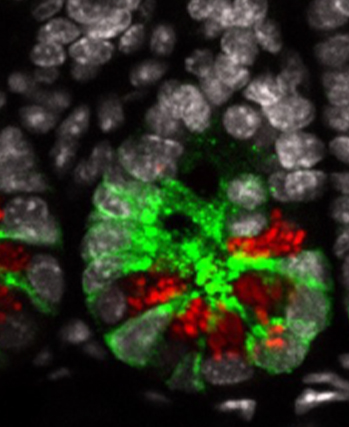In this study we present an image analysis methodology capable of quantifying morphological changes in tissue collagen fibril organization caused by pathological conditions. Texture analysis based on first-order statistics (FOS) and second-order statistics parameters such as gray-level co-occurrence matrices (GLCM) were explored to extract features from second-harmonic generation (SHG) images that are associated with the structural and biochemical changes of tissue collagen networks. Based on these extracted quantitative parameters, multi-group classification of SHG images was performed and we showed that the proposed methodology can be applied to a wide range of conditions involving collagen remodeling, such as in skin disorders, different types of fibrosis, and muscular-skeletal diseases affecting ligaments and cartilage.
Image texture analysis to characterize changes in collagen networks
Research Area: Disease Biology, Tissue Microstructure, Biophotonics and Image Analysis
https://doi.org/10.1038/srep02190
Authors: Leila B. Mostaço-Guidolin, Alex C.-T. Ko, Fei Wang, Bo Xiang, Mark Hewko, Ganghong Tian, Arkady Major, Masashi Shiomi, Michael G. Sowa

Related Articles

Publication
BMP signaling in the intestinal epithelium drives a critical feedback loop to restrain IL-13-driven tuft cell hyperplasia
Although Helminth infections are prevalent throughout the world, they are particular a health...

Publication
LSD1 represses a neonatal/reparative gene program in adult intestinal epithelium
After birth, the epithelium that lines our gut transitions (or matures) so that it can deal...
Publication
Targeting mRNA binding proteins to respond to stress responses
The paper establishes the phosphorylation of heterogeneous nuclear ribonucleoprotein A1...